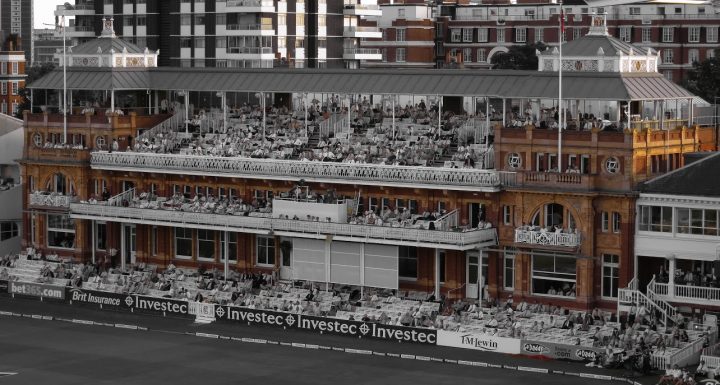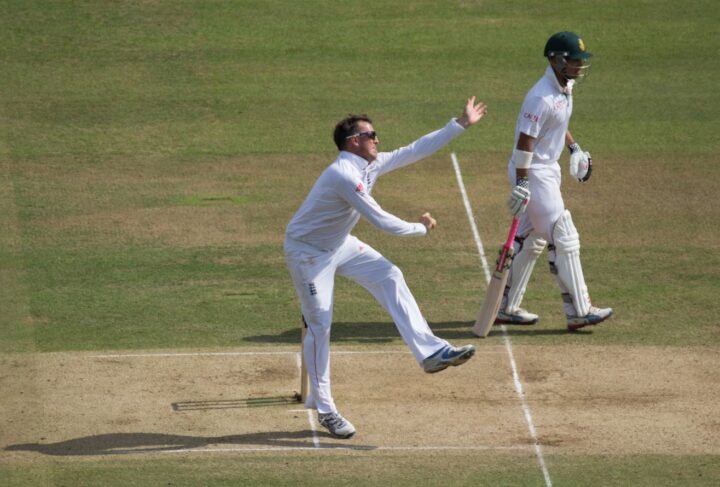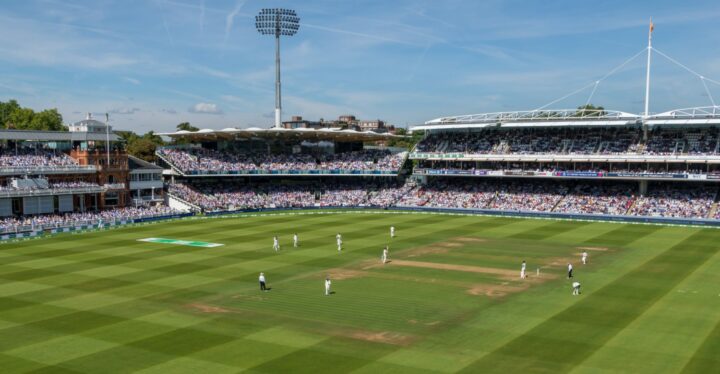Today cricket historian James Wilson looks at the history of women’s cricket and explains why Clare Connor’s appointment as MCC President is really good news.
“Ladies playing cricket — absurd. Just like a man trying to knit.”
- Sir Len Hutton
“Sod off you sexist git”
- Unnamed woman cricketer
History has been made during lockdown by the Marylebone Cricket Club, with the appointment of its first female president, Clare Connor. Connor’s cricketing credentials are impeccable, with over 100 appearances for England, and her administrative ones are equally worthy, being the present Director of Cricket for the ECB. The appointment can thus properly be said to have been on merit, not tokenism (thankfully, no one seems to have suggested otherwise).
Aside from being a woman, Connor differs from more than a few of her predecessors at the MCC by dint of being aged under 50 and not being from Oxbridge or the aristocracy, nor drawn from the ranks of clubland colonels. MCC’s website explains:
Since 1821, there have been 168 Presidents of MCC, including three men who served two terms.
Of these Presidents, a number had notable titles outside the Club; one was a member of the Royal Family, 93 were noblemen, eight were honourable, six were baronets and 13 were knights.
For some flavour of that august list, from 1952-58 the holders were The Duke of Beaufort, The Earl of Rosebery, Viscount Cobham, Field Marshal Earl Alexander of Tunis, Viscount Monckton of Brenchley, The Duke of Norfolk and Marshal of the RAF Viscount Portal of Hungerford, although the ubiquity of titles did decrease slightly thereafter.
Things have been a bit more progressive in recent times in other respects as well. Connor’s immediate predecessor – the current president – is Kumar Sangakkara, who was the first non-British national in the role. Mike Gatting held the post in 2014, which might have surprised some given that back in his playing days some of the old buffers objected to the noise of him breaking in bats in the dressing room while they were trying to enjoy a post-prandial snifter or snooze in the clubrooms upstairs (as related by Simon Hughes).
Then again, as recently as 2006 Robin Marlar as president railed against the selection of Sarah Taylor and Holly Colvin for Brighton College’s first XI (Connor, coincidentally, attended the same school and had played for the first XI in 1993 – quite a record for one institution – but received no disapprobation from either MCC or Marlar at the time). Marlar thought it was ‘absolutely outrageous’, on the ground of the girls’ safety: ‘If there’s an 18-year-old who can bowl at 80mph and he’s been brought up properly then he shouldn’t want to hurt a lady at any cost’ he told the Daily Telegraph before adding unhelpfully that if he saw a girl bowling at that speed he would question whether she had undergone a sex change. Both players dismissed his complaints and went on to careers at international level, while Connor herself denounced Marlar’s rant as ‘absurd, old-fashioned, and patronising’, adding that ‘it is unacceptable to make those comments.‘
As always with history, however, the story of women’s cricket is anything but a linear curve of steady progression. The earliest record of the women’s game seems to be a report from 1747 in the publication The Mercury of a match in Guildford between ‘eleven maids of Bramley and eleven maids of Hambledon, all dressed in white’. The match was won by Hambledon, by 127 notches to 119, with The Mercury noting approvingly ‘There was of both sexes the greatest number that ever was seen on such an occasion. The girls bowled, batted, ran and catches as well as most men could do in that game.’ One infers from the report that ‘the girls’ were not novices, and therefore they and other women had to have been playing the game for some time by then.
Another random surviving account from the eighteenth century is of a 1793 match between Married Women and Maidens at Bury Common. The single ladies lost, but again the record of the fixture implies that women’s cricket was not a novelty in those times.
Unfortunately, over the next hundred years women’s cricket soon fell far behind that of the men, at a time when sport in general was becoming much more organised. The first official women’s cricket club, the White Heather Club at Nun Appleton in Yorkshire, was not formed until as late as 1887. That date seems somewhat surprising given that the Victorians were not universally against women’s cricket: in the 1890 edition of James Lillywhite’s Cricketers’ Annual, the patronising authors judged cricket to be less ‘severe’ on women than lawn tennis or various other sports and hence appropriate for them to play. There have even been suggestions that it was women cricketers who invented overarm bowling in the mid-nineteenth century because underarm was not easy with the wide skirts of the time, though I have not seen a definitive source.
Things continued to move slowly in the twentieth century. It was not until 1934 that the first women’s test was played, and it was not until 1998 before MCC, 211 years old at the time, finally dragged itself into a semblance of modernity by allowing women members. Previously, the only woman who had been allowed to set foot in the Long Room at Lord’s was Queen Elizabeth II, much to the consternation of one desiccated member who, seeing her from a distance, exclaimed with displeasure that EW Swanton had a woman with him. (On another of the Queen’s visits a flunky had to be despatched at haste because it emerged that even the famously well-stocked Lord’s cellar did not have any Dubonnet, Her Majesty’s favourite lunchtime tipple.)

Admitting women to MCC had certainly been a hard-won battle. A legend of the woman’s game, Rachael Heyhoe Flint, had applied for membership as far back as 1991, but the vote had repeatedly failed to obtain the necessary two-thirds majority for a rule change. Some unintentionally tragicomic mumblings were made during the various debates. One was heard to complain that he would have to ‘modify his behaviour’ if women were admitted, raising disturbing questions about how he normally behaved towards women (or men for that matter). Others thought that women might spoil the conversation (presumably by talking about women’s cricket). Still another speculated with trepidation that the Lord’s shop might start stocking MCC-coloured twinsets and lingerie (why that would be a problem he did not make clear). A letter to The Times baldly declaimed that cricket was a ‘man’s game’, the author presumably having not read anything published after 1747.
All in all, the objections gave the impression that the old dodderers shared the concern of Pliny the Elder that the presence of fertile women might turn the wine sour. The underlying problem seems to have been that the members regarded MCC as a Pall Mall gentleman’s club – a private institution whose members could do as they pleased – rather than an organisation to administer and promote the game of cricket. If the latter then it would make no sense to exclude 51% of the population. (If the former it wouldn’t either, but that would be up to the members themselves.)
There was especial irony in their rejection of Heyhoe-Flint, given how far sighted she had been for cricket as a whole – being the visionary behind the first cricket World Cup. She was eventually one of the first group of women members admitted, her membership being conferred upon her because of her status in the game. Others qualified as playing members or were given honorary life membership, including Connor, though everyone else had to join the normal MCC queue and wait 20 years. (MCC has just announced that in future anyone with a spare £80,000 might be able to purchase a life membership, to help the club with its Covid 19-inflicted cash shortage. The rich are different from you and me, as F Scott Fitzgerald once said.)
After the admission of women, the next step of note by MCC was in 2017, when it decreed that future editions of the laws of the game would be written in gender neutral language. It was not so simple, however, since MCC decided that a few expressions such as ‘batsman’, ‘third man’ and ‘twelfth man’ were well enough established that no one wanted an alternative, thus freeing cricket authors from having to write ‘nightwatchbatswoman’ as I once read in an old magazine.
In the present day, although overt sexism might have been removed from the game, I still wonder if the authorities promote women’s cricket as well as they might. Test matches are few and far between; heaven forfend that the only considerations might be short-term financial gain rather than a longer-term attempt to expand the women’s game. According to Cricinfo there have only been 140 women’s test matches in history, compared with more than 2,000 men’s, and none at all took place in 2018 (a solitary one was held between England and Australia in 2019). Instead, women play almost exclusively T20 or 50 over matches. Even the Women’s Ashes is contested by a series of T20, 50 overs as well as a test match or matches, with the winner determined on aggregate results.
Further, if MCC and its presidents have mended their ways, the same cannot be said for all cricketing luminaries, given Sir Geoffrey Boycott’s recent prattle about women commentators being disqualified ab initio from the role of summariser because, he maintained, that function could only be adequately done by someone who had played men’s test cricket (Boycott allowed women to be ‘commentating, fronting as presenters and reporting’, but failed to make any case as to why summarisers should be treated differently).
In other parts of the cricket-playing world, relations between the sexes have been even less enlightened over the years and in some places still are. In 2007, for example, international cricket at the Queen’s Park Oval in Trinidad was imperilled when it emerged the club which ran the ground still excluded women from its membership, nearly a decade after MCC’s belated change and despite efforts to compel change.
Since MCC no longer holds the position it once did in the game of cricket, in England or globally, Connor’s role will not have quite the influence it might have done once. But MCC is still an important organisation, acting as custodian and arbiter of the laws and spirit of the sport, and her position should certainly raise the profile of the women’s game. We should wish her well in all respects.
© James Wilson 2020
James is a cricket historian and author of Court and Bowled: Tales of Cricket and the Law.









If it helps the development of the women’s game at grass roots level it’s been a good thing, if it doesn’t it’ll just be seen as another example of failed PC positive discrimination. Raising the profile of the women’s game cannot happen until standards improve and such are the paucity of cash and resources in the women’s game, admitted by the participants themselves, that the radical change In structure required cannot happen until the men’s game help it out. After Covid does the Mens game have the available resources or the will to help.
I remember Sally Potter, daughter of playwright Dennis of ‘Singing Detective’ fame coming onto the scene in the 70’s by playing northern league cricket with the men and making her mark as a decidedly nippy left arm seamer. I don’t see anything as potent as her in the present England side, almost 50 years on. We seem to be composed of the usual suspects whatever form they’re in. At club level I don’t see the problem with women playing alongside the men. The bleating about separate changing rooms is a pathetic excuse. If they’re keen enough and can make an effective contribution bring them in. It will help raise standards far quicker than playing amongst themselves.
I think women’s tennis shows that the women’s game could get much greater publicity etc than it does at present; the fact that women cannot serve like Pete Sampras isn’t seen as relevant in tennis.
Thanks for the mention of Sarah Potter: I think The Singing Detective remains the greatest tv miniseries in history, and Potter’s final interview with Melvin Bragg one of the most moving pieces of tv as well.
I am sure women’s cricket could get much better exposure like tennis does.
But then as one of the Williams sisters admitted, Andy Murray would beat her 6-0, 6-0 in 10 minutes. And that’s despite all the exposure, money and everything else that women’s tennis has had over many years.
Why are you pushing for equality of an inferior game?
Let women play alongside men in the club game and then expand that to the higher levels. If they are good enough then they should be picked at any level. If not then stop pretending that they deserve equality.
Unless perhaps you also propose equality for the England Badly Coordinated Cricket Team. Personally I don’t think that I would even make the Badly Coordinated Local Team First X1, but I am still as good at the game as my sister who had she been 20 years younger would have had County aspirations.
Rather than tennis, a much more restricted game as each individual only has to be better than a single opponent, hence the rise of the gym bodied base line sluggers from Eastern Europe, footie is a better case in point. Here the Mens game is actively supporting the womens, allowing them access to their facilities and it’s certainly drawing crowds and raising standards. It will never have the physical potency or speed of the Mens game but it is, as the World Cup showed, an eminently watchable experience when played by the top sides. With the right encouragement womens cricket could follow suit, but there’s has to be a realistic incentive to make the grade from amateur to professional. At present there’s no effective professional apprenticeship for them to up their game to the necessary level, so many are forced through financial expediency to revert to civvy street in order to make their living, continuing to play merely as amateurs.
I’ve seen the Potter example given in a few comments, and wondered whether it’s relevant for a completely different reason–namely that, if what we’re talking about is speed rather than skill, maybe she was just an outlier.
You could say the same about Frank Tyson–there wasn’t really anyone in the England team who consistently bowled as fast as him until, what, eighteen months ago?
Sally Potter took at lot of wickets in the Yorkshire leagues, not an easy apprenticeship. I saw her bowl a couple of times and she could swing and seam the ball a bit like John Lever.
I wrote to Clare immediately after the announcement to congratulate her. I’m delighted. I expected Rachel H-F to be the first female President and would have had mixed feelings about this – not because she was a woman but because she was a reactionary conservative and once supporter of White Supremicist South Africa.
MCC is in Virtue Signalling mode at the moment. Two successive presidents who whatever their individual merits between them handily tick the Foreigner, person of colour and gender boxes. Then the utterly preposterous decision to award Tom Moore honorary life membership of the Club. Still it does mean that you don’t have to be a fat cat to afford a Life Membership – reach the age of 99 and walk 100 times around your garden with a Zimmer frame will do.
As far as terminology is concerned the World Cup last year morphed from the “Cricket World Cup” to the “Men’s Cricket World Cup” – a nonsense of course. You need to call the World Cup for women the “Women’s Cricket World Cup” but the men’s version has historically always been the “Cricket World Cup” and there was no earthly reason to change that.
MCC needs to do much more if it really believes in diversity. Maybe Clare can be a catalyst for change – I hope so. But there’s a long way to go.
As someone still waiting for honorary life membership I’m inclined to agree re Tom Moore – he didn’t have anything to do with cricket and it smacked of MCC trying to get on a bandwagon rather than anything else.
Just one point about the World Cup, however – the first women’s WC came before the men’s, and was Rachel H F’s idea, so she might have run the same argument in reverse back in 1975!
Thanks Paddy. I did wonder whether you’d comment on this article. It’s good to have the views of an MCC member.
Thanks James, I’m a bit of a rebellious member so not sure my views typical !
At least James has used the correct logo for this article Paddy !
It’S unfair to markKumar Sangakkara as a divesity hiere, he was a good cricketer and a smart person.
Actually it should be the men’s World Cup. Since the ladies actually beat the men to organising the first cricket World Cup in 1973.
Yet another reason that cricket stands out, compared to other sports. More structural erasure of the women’s game, than most other major sports.
MCC is an embarrassing anachronism; Connor’s appointment is part of the unfolding agenda. A plague on both their houses. When given a fake dialectic like “MCC or Connor?” the right answer is usually “neither”.
By what yardstick are you saying it’s of a poor standard? No one could or would expect it to be of the same standard as the men’s – no women swimming, or track and field, records are anywhere men’s, but that doesn’t mean female athletes in those sports should be disparaged. Maybe Wisden should have separate men’s and women’s cricketers of the year awards.
Poor standard compared to what though? Florence Griffith-Joyner holds the women’s world 100m record at 10.49 seconds. That would be a very average time for a world class male sprinter but we can’t judge by the same standards. FGJ should still be judged as a tremendous athlete in her own right.
Clare Connor has had a distinguished career. She played over 100 times for England in all forms. She also finished her career by winning the women’s Ashes. It’s hard for a cricketer to achieve much more than that. She’s achieved just as much as former president Mike Gatting so I see this as an appointment based on merit. It’s a shame if some see this (I’m not saying your are, Doug) as a PC motivated move, but if people think this then they’re wrong imho. The standard of women’s cricket (whether perceived as good / bad) is irrelevant really.
I’m not an expert when it comes to the MCC but it does strike me that it’s time they had a female president. If a suitable candidate comes along – and Clare Connor certainly has the gravitas within the women’s game – then good luck to her.
The great and the good talking here.I was a reasonable club cricketer in my day but nothing exceptional. i only ever played against a female player once and it was at middlesex league 3rd Xi level. Southgate v Stanmore if anyone else from that era is reading this. The ladies name escapes me but she came into bat at number 4. Not a hint of anything other than she was one of the 22 players in the match and was treated as such. I saw no problem with anything that happened in the match. i was told afterwards that she had played many time for New Zealand and she was technically excellent but lacked power in her strokes the player was there on merit and as an opponent I respected her ability. I wonder if at grass roots level we all feel the same?
I would have thought that anyone who sees this appointment as politically correct is merely revealing the chasm of their own ignorance.
“Prominent English cricket club appoints as President former England cricket captain and current ECB director of cricket” is hardly an earth-shattering decision…apart possibly from in the context of the MCC’s long-standing historical sexism.
I can’t even begin to fathom why the appointments of Connor and Sangakkara would be seen as virtue signalling. That would seem possible only by starting from a (prejudiced) obsession that organisations are appointing people who aren’t white men, shock horror. They’re simply two good candidates who make a lot more cricketing sense than some previous presidents–end of story.
Why does the standard of women’s cricket have anything at all to do with who the President of MCC is?
Congratulation to CC a worthy appointment after so many years of hardwork.
I would suggest her impact on the ECB Board has been in areas such as salaries, matches at Lord’s (apart from World Cup Finals) been diluted by the power of her bosses.
I hope in her new role she maybe able to reinstate her authority and kick start the women’s game
It’s interesting that you see as evidence of something being thrust down your throat the selection of three members of an England WC-winning side but not that of the man who had one great test match, two other mediocre ones, three other f-c matches where he hardly faced a county first-choice bowler, four unspectacular ODIs, and who now averages less than 23 in Tests if you take away that one great match (out of 31–he’s not scored another century in those 30, and he’s rarely got to 50)….
Who are you talking about here?
Shai Hope (Jamie Porter, who’s the fifth one from the 2018 Wisden, didn’t play any international cricket)
Previously, the only woman who had been allowed to set foot in the Long Room at Lord’s was Queen Elizabeth II
That’s not true ! Durham had a female physio before the MCC rule change and she was allowed to go through the Long Room en route from the dressing to the pitch !
Not sure. When did the Queen first visit the Long Room? Durham became a first class county in 1991 I think. It’s possible the queen visited Lord’s before then. The date in the article (1998) was when women members were allowed not when the Queen visited.
That’s not the point that John is (jokingly, I think) contesting–it’s that the Queen was the ONLY woman previously allowed, not the first.
That’s right marek – tongue firmly in cheek ! I was there for a Middx v Durham and was a bit surprised not so much to see her in the Long Room as by the fact that no one commented on it !
Sorry – dressing room.